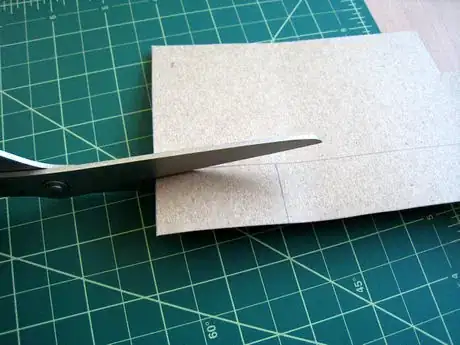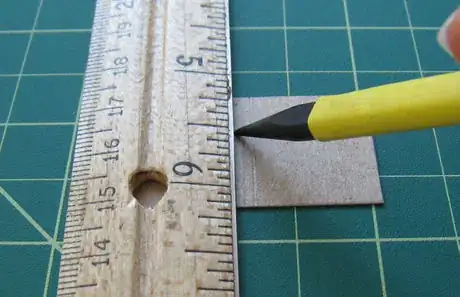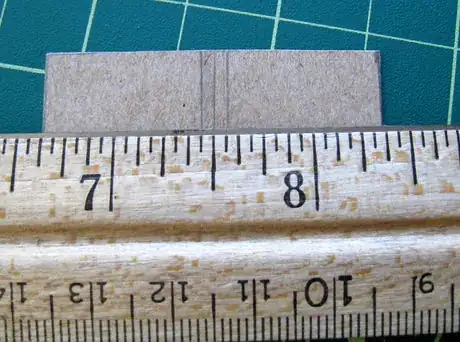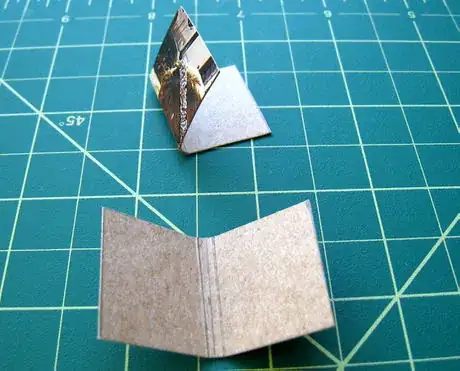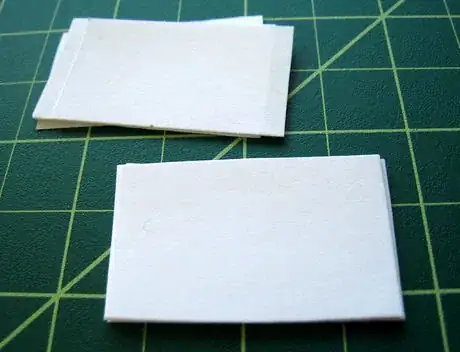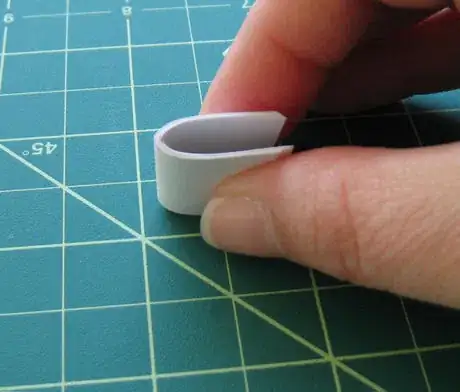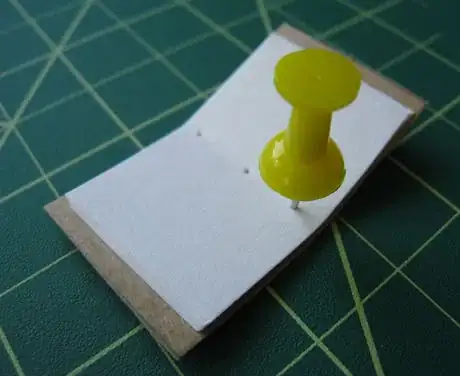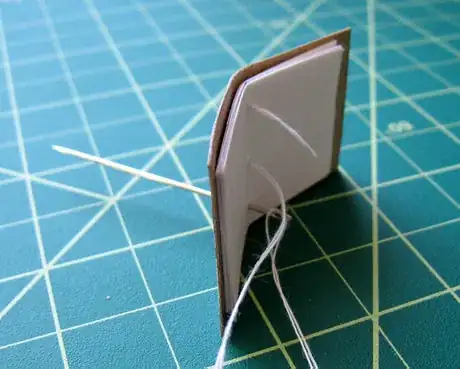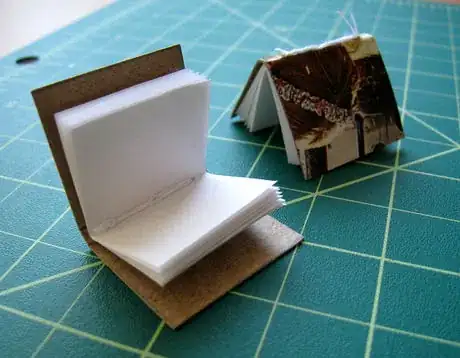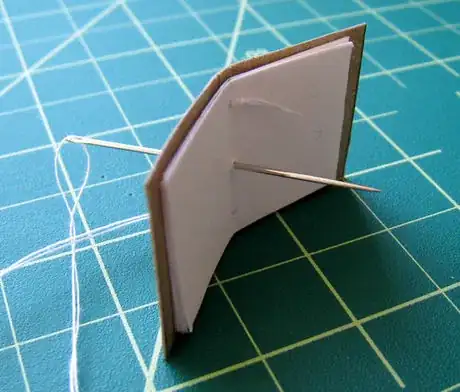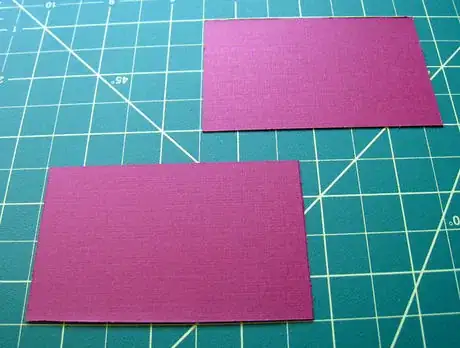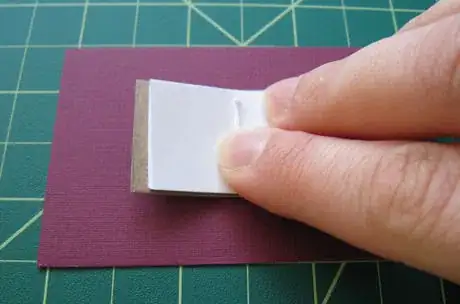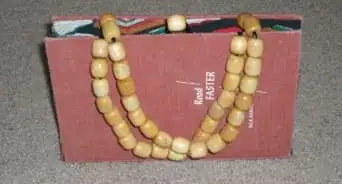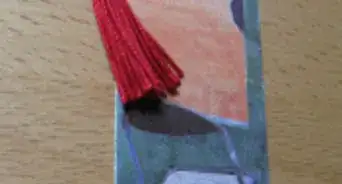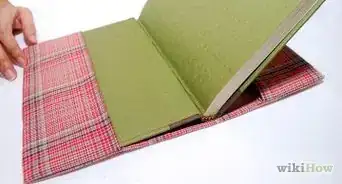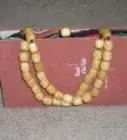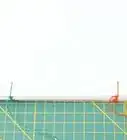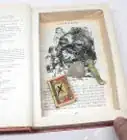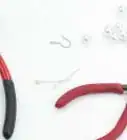X
wikiHow is a “wiki,” similar to Wikipedia, which means that many of our articles are co-written by multiple authors. To create this article, 24 people, some anonymous, worked to edit and improve it over time.
This article has been viewed 459,760 times.
Learn more...
Book earrings make a great gift for anyone who loves to read, including yourself. You can make your own in a matter of hours and express your status as a bookworm or your belief in literacy. Use this step-by-step guide to get started, and click on any photo to enlarge.
Steps
-
1
-
2Locate the center of each rectangle and mark it from top to bottom with a pencil. Hold a ruler on the second line, and make ticks 1/16th" (1.5mm) away on each side. Score the lines on either side of the center from top to bottom, using an empty ball point pen or a bone folder.Advertisement
-
3Fold the cardboard along the scored lines to form the covers for your tiny book. Don't fold along the center line.
-
4Cut out your pages. Cut sixteen rectangles of ordinary printer paper, measuring 7/8" (22mm) long by 1.5" (3.8cm) wide. If you have access to a paper cutter it will help make the pages even, as will stacking or folding the paper before cutting. (Don't stack too thickly, though, or you'll have trouble cutting. Two stacks of eight layers each seem to cut reasonably easily, and it doesn't matter if the pages for one book are slightly different from the other.)
-
5Fold each stack of eight sheets in half down the middle. Trim the outside edges so that they're once again even. These will form the pages of the books.
-
6Punch out holes for binding. Line up the centers of the pages with the centers of the cover cardboard. Lay the book open flat with the cover side down on a cutting mat or a spare chunk of scrap cardboard. Use a push pin to poke three holes in the spine, through the center of the pages. Do this for both books.
-
7Thread a needle and tie a knot with some white thread or thin string.
-
8Stitch down through the top hole.
-
9Stitch up through the middle hole.
-
10Stitch down through the bottom hole.
-
11Do a second stitching pattern. Bring the needle back up through the middle hole, down through the top hole, etc. If you're using thin thread, you may want to do this figure-8 pattern a couple more times before tying it off. Loop the thread through itself on the back side a few times to tie off the stitches, then trim the excess thread.
-
12Cut out your cover. Cut two rectangles of the decorative fabric or paper, 3.25" (8.25cm) wide by 2" (5cm) long. If there is a pattern or grain to the fabric or paper, check to make sure that your rectangles run parallel to it. These will become the covers of your books.
-
13Center one book on the decorative sheet with the pages wide open. Keep each decorative cover together with the book you used to measure it, in case they are slightly different sizes.
-
14Cut out the corners as shown. Cut at a shallow angle from the corners of the score marks to the edge. The exact angle is not important, but try to get it reasonably symmetrical.
-
15Center the book on the cover and cut V-shaped notches as shown around where the spine will be.
-
16Score the decorative material on either side of the spine if you are using paper. The photo shows the cover ready to glue.
-
17Apply a generous (but not sloppy) amount of glue to the center of the decorative material and to the top and bottom flaps. Make sure to put the glue on the "back" or "wrong" side of the material, and make sure to apply glue on the entire area, all the way to the edges.
- It helps to put a piece of scrap paper behind as you apply the glue, to catch any that runs over the edges.
- A glue stick is a bit neater than liquid glue, but either will work.
-
18Place the book onto the decorative material and press it firmly against the back, making sure the edges line up with the score marks. Fold the top flaps over and press them firmly. Repeat for the bottom flaps.
-
19Apply glue to the side flaps and fold them in, over the top and bottom flaps. Press firmly.
-
20Thread a string between the top portion of binding and the cardboard you used as the basis for your cover.
- Alternatively, you could glue the string, but be sure it is secure.
- Alternatively, you could glue the string, but be sure it is secure.
-
21Tie a simple knot in the string. Pull it close to the book, then tighten it firmly.
-
22Turn the knot downward and trim off the excess string.
-
23Open the ring on the earring mount, thread it through the loop on the book, and close it again. Use needle-nose pliers or jewelry pliers without teeth. Insert the earring mounts so that the books will both point forward when the earrings are worn.
-
24Let the glue dry thoroughly before trying on the earrings. Rest a heavy book on top of them to hold them closed while the glue dries.
Advertisement
Community Q&A
-
QuestionHow can I add a closure to the book?A tiny amount of clear tape could be used to keep the book closed. You could make earrings that look like closed books instead of following these instructions. A thin ribbon could be tied around the book and glued in place.
-
QuestionI suck at sewing, so what can I do instead of sewing the binding and hook base?
 Community AnswerYou could instead glue, staple or safety pin them.
Community AnswerYou could instead glue, staple or safety pin them. -
QuestionCan I make these tiny books into Christmas ornaments?
 Community AnswerYes, that would be a wonderful idea. You can use ornament hangers instead of earring hooks.
Community AnswerYes, that would be a wonderful idea. You can use ornament hangers instead of earring hooks.
Advertisement
Warnings
- To put holes in the pages and the back, place it against an object that can support it but take a tiny hole. A scrap of cardboard or an old magazine are both good choices. Don't hold the project in your fingers to poke holes. You can also place a blob of sticky-tack or blue tack on the table to pierce into, to avoid pushing the needle through fingers or scratching the table. Put holes in the pages and the cover separately if you need to.⧼thumbs_response⧽
- If you're making these as a gift, make sure to check whether your recipient has pierced ears.⧼thumbs_response⧽
- Make sure your fingers aren't behind the needle as you stitch the binding.⧼thumbs_response⧽
- Since these earrings are made mostly out of paper, avoid getting them wet.⧼thumbs_response⧽
- Use scissors, X-acto knives, and paper cutters safely. Cover your X-acto knife when not in use, and never cut towards yourself.⧼thumbs_response⧽
Advertisement
Things You'll Need
- A piece of stiff (but not corrugated) cardboard, such as a cereal box, the back of a notebook, or a piece of cardstock from junk mail printed on heavy paper. A stiff index card or old business card could also work.
- A sheet of plain, white printer paper
-
A piece of decorative paper or thin fabric
- Try the scrapbook section of a craft store for wonderful decorative papers. Gift wrap and origami paper are also good possibilities.
- A piece of thin string or cord to match your decorative paper or fabric.
- Earring mounts, your choice
- A glue stick or glue
- Scissors
- Paper cutter (optional)
- X-acto knife (optional)
- Needle and thread
- Thimble (optional)
- Push pin/thumbtack (optional)
- Scoring implement (stylus, ball point pen with no ink, bone folder for bookmaking)
- Needle-nose pliers or jewelry pliers without teeth
- A cutting mat or other object to cut against. Cardboard and old magazines both work well.
About This Article
Advertisement
